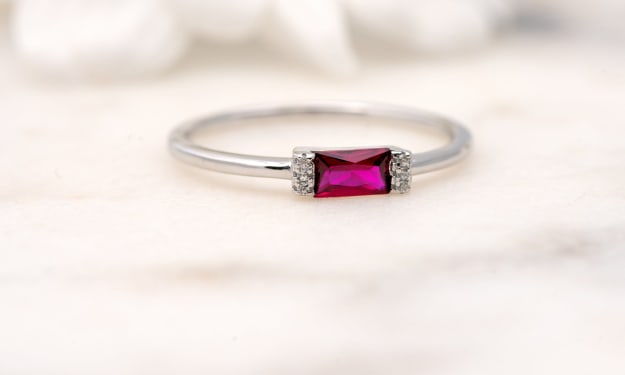Why Wearing Rastafarian Clothing is More Than Just a Fashion Statement
The Cultural and Spiritual Significance Behind Rastafarian Clothing

Fashion is an ever-changing phenomenon, with trends coming and going every season. However, some styles have deeper roots and significance than others. Rastafarian clothing is one such style that has transcended the realm of fashion and holds great cultural importance.
Rastafarian culture emerged in the early 20th century in Jamaica and is heavily influenced by African traditions and beliefs. The movement was founded on the principles of equality, social justice, and spiritual enlightenment. It quickly gained popularity among the oppressed and marginalized communities in Jamaica and eventually spread worldwide.
Clothing plays a significant role in Rastafarian culture, representing their identity and values. The clothing style is characterized by vibrant colors, natural fabrics, and loose-fitting garments. The colors hold great symbolic meaning, with red representing the blood of martyrs, green representing the vegetation of the earth, and gold representing the wealth of Africa.
By wearing Rastafarian clothing style, individuals can show their appreciation for the rich cultural history and values of the movement. It is a way to support the community and promote social justice, empowerment, and unity. This blog post will delve deeper into the significance of Rastafarian clothing and why it is more than just a fashion statement.
The significance of Rastafarian clothing
Rastafarian clothing is characterized by its unique style and use of natural fabrics. The clothing items are usually loose-fitting and comfortable, allowing for free movement and expression. Some of the typical items of Rastafarian clothing include dashikis, tunics, kaftans, and wide-legged pants. These garments are often made from cotton, linen, or other natural materials, and may be adorned with African-inspired patterns or prints.
The colors of Rastafarian clothes hold great symbolic significance. Red represents the blood of martyrs, symbolizing the sacrifices made by those who fought for justice and equality. Green represents the vegetation of the earth and the importance of nature in Rastafarian beliefs. Gold represents the wealth of Africa and the pride of the African people.
Clothing plays a significant role in expressing Rastafarian identity and values. The clothing style is a reflection of the culture’s African roots and connection to nature. It also represents the movement’s rejection of Western culture and ideals, and its focus on spirituality and social justice. By wearing Rastafarian clothing, individuals can express their affiliation with the movement and promote its values.
Rastafarian clothing represents unity and strength by promoting a sense of community and belonging. The clothing style is a symbol of resistance against oppression and a celebration of African culture and heritage. By wearing Rastafarian clothing, individuals can connect with others who share their beliefs and values. This sense of unity and solidarity strengthens the movement and empowers its members to continue fighting for social justice and equality.
Understanding Rastafarian culture
Rastafarianism originated in Jamaica in the early 20th century, emerging from the country’s African diaspora. It was founded by individuals who sought to reject Western culture and embrace their African heritage. The movement gained popularity among the poor and oppressed communities in Jamaica and eventually spread throughout the world.
Rastafarianism is a spiritual movement that focuses on the worship of Jah, the God of the Rastafarian belief system. Rastafarians believe that Jah is present in all living things and that they can connect with him through meditation, prayer, and the use of cannabis. They also believe in the divinity of Emperor Haile Selassie I of Ethiopia, who they believe is the reincarnation of Jesus Christ.
Rastafarianism has had a significant influence on the world of music and art. Reggae music, which emerged from Jamaica in the 1960s, is heavily influenced by Rastafarian beliefs and values. Many famous reggae musicians, such as Bob Marley, Peter Tosh, and Burning Spear, were Rastafarians who used their music to promote social justice and unity. Rastafarianism has also inspired visual artists, who use their work to express the movement’s values and ideals.
Rastafarianism is closely linked to social justice movements, as it emphasizes the importance of equality and empowerment for all people, regardless of their race or socioeconomic status. The movement has been involved in various social justice campaigns throughout its history, including the fight against colonialism, racism, and economic inequality. Rastafarians have also been active in promoting environmentalism and sustainable living.
Wearing Rastafarian clothing as a form of cultural appreciation
Cultural appropriation is a controversial topic that arises when individuals from one culture adopt the customs, traditions, or clothing of another culture without understanding or respecting its significance. In contrast, cultural appreciation involves learning about and honoring another culture’s history, traditions, and values while showing respect for its members.
Wearing Rastafarian clothing can be a form of cultural appreciation that demonstrates respect for the culture and its values. By donning Rastafarian clothing, individuals can show their support for the movement’s message of social justice, equality, and empowerment for all people. Moreover, it can serve as a way of celebrating and recognizing the cultural significance of Rastafarianism.
Learning about and appreciating other cultures can broaden one’s perspectives and increase empathy and understanding. It can also foster a greater appreciation for diversity and cultural differences, promoting acceptance and inclusivity.
To wear Rastafarian clothing in a respectful manner, individuals should first learn about the culture and its significance. They should avoid appropriating the clothing or symbols without understanding their meaning and history. Additionally, they should purchase their clothing from reputable sources that work directly with Rastafarian communities, supporting the movement’s values and principles. Finally, individuals should wear Rastafarian clothing with respect and humility, recognizing the significance it holds for the culture and its people.
Rastafarian clothing as a symbol of resistance and empowerment
Rastafarianism emerged in Jamaica during the early 20th century as a response to the oppressive colonial powers that ruled the island. Rastafarians resisted the social, economic, and political oppression of their society, advocating for the empowerment and liberation of all people.
Rastafarian clothing represents a form of defiance against oppressive systems. The bright colors, such as red, green, and gold, worn by Rastafarians signify the strength, courage, and resilience of the movement. The clothing’s use of natural fibers and textures represents the connection to the earth and the environment, reflecting the Rastafarian philosophy of living in harmony with nature.
Rastafarian clothing promotes self-love and confidence, encouraging individuals to embrace their unique identities and celebrate their heritage. By donning Rastafarian clothing, individuals can express their pride in their cultural identity and resist the pressures to conform to dominant societal norms.
Rastafarian clothing has played a significant role in social justice movements worldwide, serving as a symbol of resistance, empowerment, and liberation. In the United States, Rastafarianism and its associated clothing have been embraced by African American communities as a form of cultural and political resistance against systemic racism and oppression.
Ethical and sustainable Rastafarian clothing options
Fast fashion has become a major contributor to environmental degradation, worker exploitation, and economic inequality. The production of cheap, disposable clothing has led to the overuse of resources, pollution of waterways, and increased greenhouse gas emissions. Additionally, many fast fashion brands rely on cheap labor in developing countries, exploiting workers and perpetuating economic inequality.
There are several sustainable and ethical Rastafarian clothing brands that consumers can support to reduce their environmental impact and ensure that workers are treated fairly. These include brands like Fifth Degree, Marley Apparel, Dubwise, and RastaEmpire, which use sustainable and organic materials, support fair labor practices, and prioritize community empowerment.
By supporting sustainable and ethical Rastafarian clothing brands, consumers can contribute to the preservation of Rastafarian culture and promote community empowerment. These brands often work closely with Rastafarian communities, employing local artisans and supporting social and economic initiatives that benefit the community as a whole.
Consumers can make sustainable and ethical fashion choices by prioritizing clothing made from natural, organic, or recycled materials, supporting brands with transparent and ethical supply chains, and choosing high-quality, durable clothing that will last longer. Additionally, consumers can reduce their environmental impact by buying secondhand clothing, repairing and repurposing their existing clothing, and avoiding impulse purchases.
Conclusion
Wearing Rastafarian clothing is more than just a fashion statement, it is a way to show respect for the culture and its values. Through the colors, symbols, and designs of Rastafarian clothing, wearers can express their solidarity with the culture and its history of resistance, empowerment, and spirituality.
Throughout this article, we have explored the significance of Rastafarian clothing, the history and beliefs of Rastafarian culture, the importance of cultural appreciation, and the benefits of supporting sustainable and ethical fashion options. By appreciating and supporting Rastafarian culture through clothing choices, we can help preserve and promote this rich and meaningful culture for future generations.
Therefore, let us take action by educating ourselves on the culture, seeking out sustainable and ethical Rastafarian clothing options, and wearing Rastafarian clothes in a respectful manner. By doing so, we can demonstrate our appreciation for Rastafarian culture, support the community, and contribute to a more just and sustainable fashion industry. Wearing Rastafarian clothing is more than just a fashion statement, it is a way to honor a culture that has had a profound impact on music, art, and social justice movements around the world.
Photo by Belinda Fewings on Unsplash
About the Creator
Enjoyed the story? Support the Creator.
Subscribe for free to receive all their stories in your feed. You could also pledge your support or give them a one-off tip, letting them know you appreciate their work.






Comments (1)
Well said. I have several Rasta inspired scarves, and I do feel pride in them.